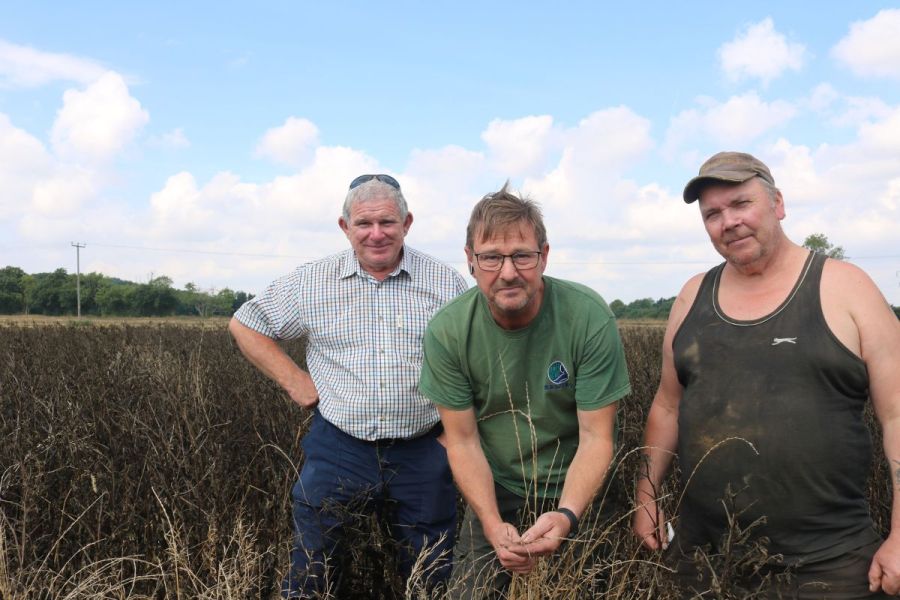Flufenacet resistance on an estate in Kent forced a rethink and a change in strategy. CPM visits to gather progress.
The identification of resistance was a lightbulb moment for us.
By Tom Allen-Stevens
The field of beans has just been harvested, and in among the spikey brown of the stubble, the tramlines stand out as a washed-out, softer green. “We’re going to make a tramline sprayer,” says Ben Binder, and you can tell from the anxious way he surveys these lines of green that he’s totally serious.
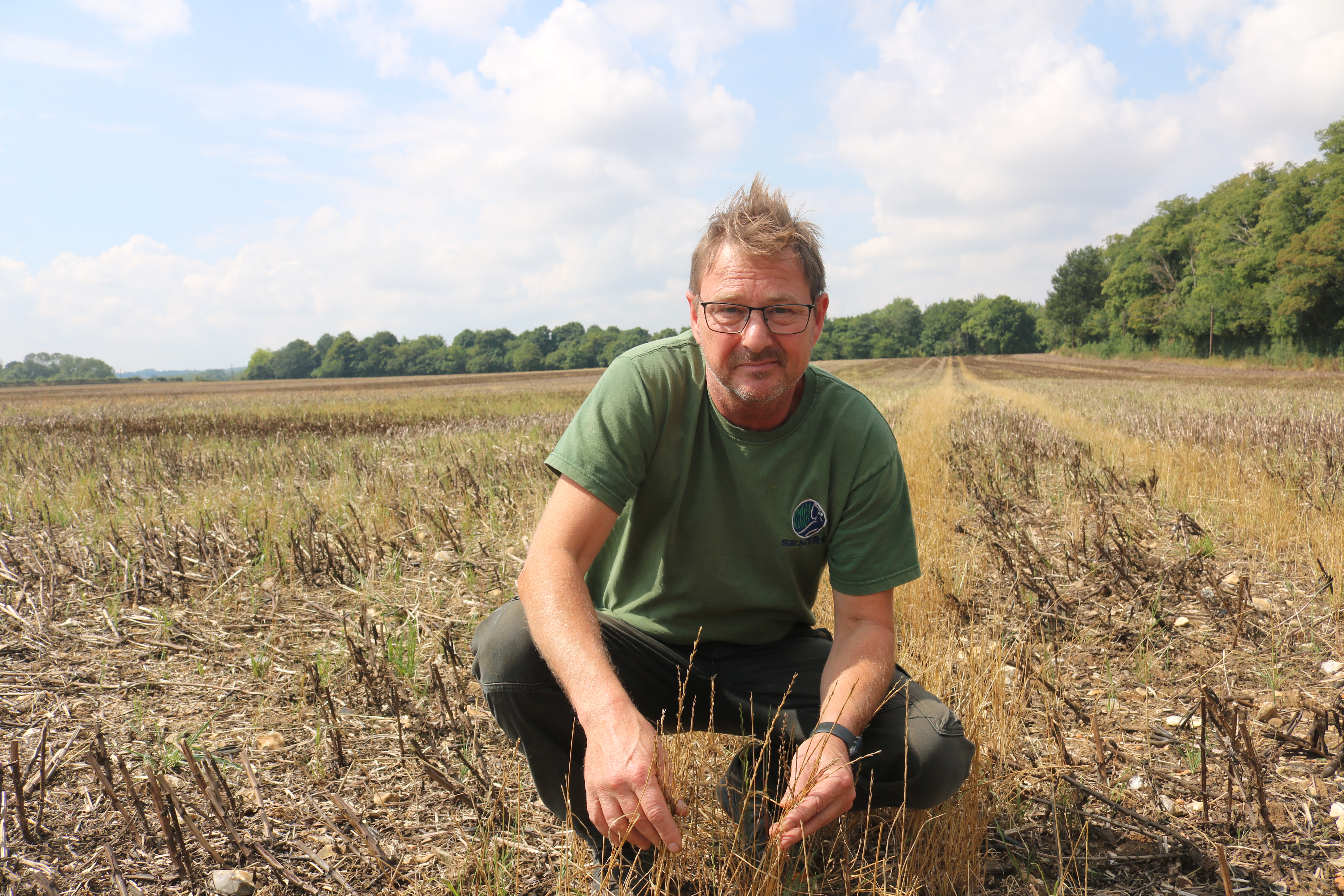
The tramlines demonstrate how persistent the ryegrass is, says Ben Binder, and how it emerges, relentlessly, right throughout the season.
“We’ll take two shrouded nozzles up every tramline that’ll take out the ryegrass with glyphosate before it goes to seed. The tramlines demonstrate how persistent this weed is, and how it emerges, relentlessly, right throughout the season.”
The culprit is Italian ryegrass (Lolium multiflorum). Ben is manager of the 600ha of arable farmed by Sentry Farming for the Belmont Estate, near Faversham in Kent. It was here in 2018 that ryegrass resistant to flufenacet was first identified. Ben walks over to an uncut area of the bean crop and takes the seed heads of a standing ryegrass plant in his hand – you’re not sure whether he’s inspecting the heads, to see how much seed has shed, or throttling them.
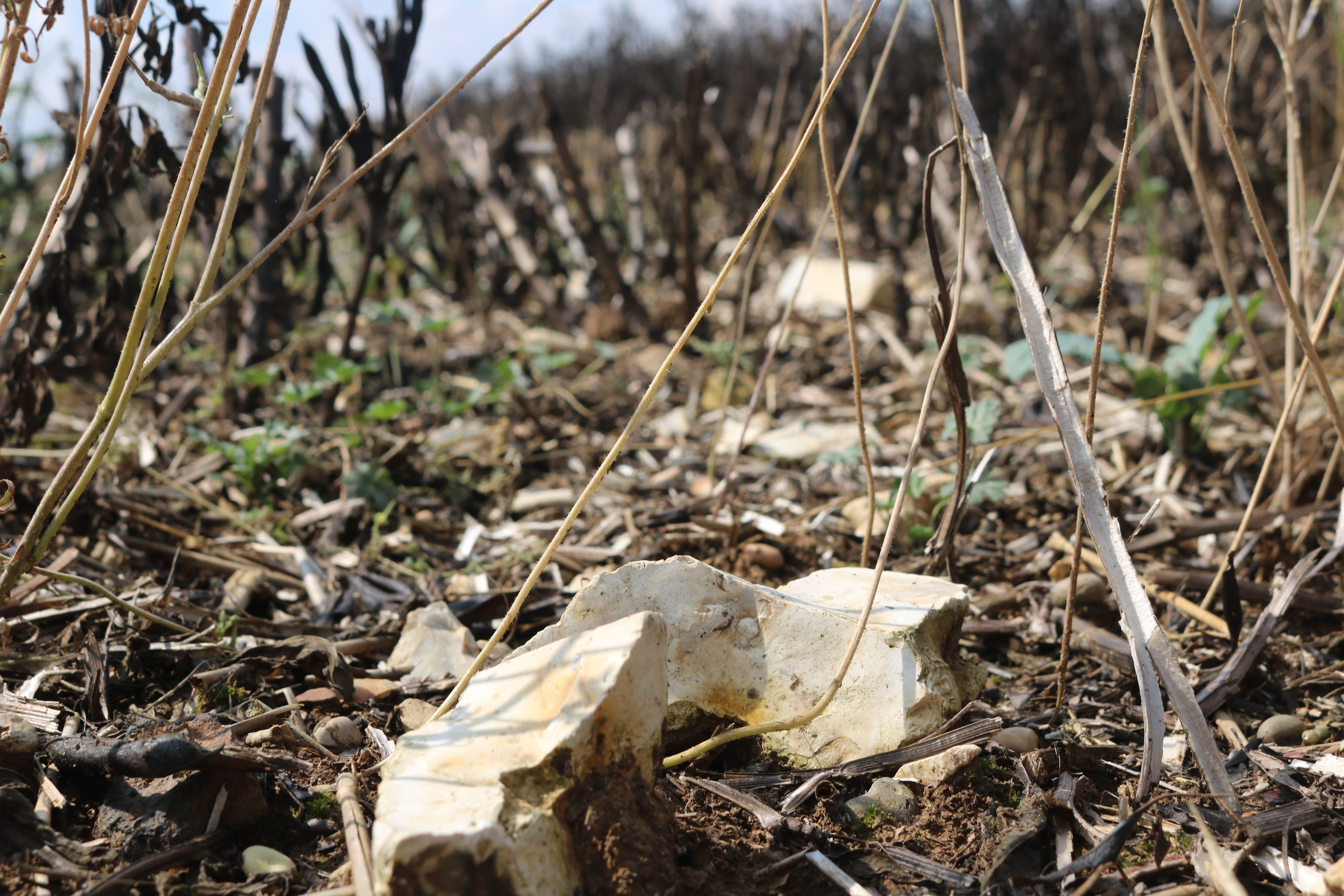
The farm still needs some form of cultivations on its steeply undulating clay loam soils, many of which have a vicious flint content.
“We’ve developed a system, and should now be doing as much as we can to get on top of the ryegrass,” he notes. Joining him in the field to discuss progress is NIAB regional agronomist for the South East Keith Truett and sprayer operator Dave Kench, who also drives the Claas Lexion 750 Montana combine harvester and does much of the cultivations across the steeply undulating clay loam soils, many of which have a vicious flint content.
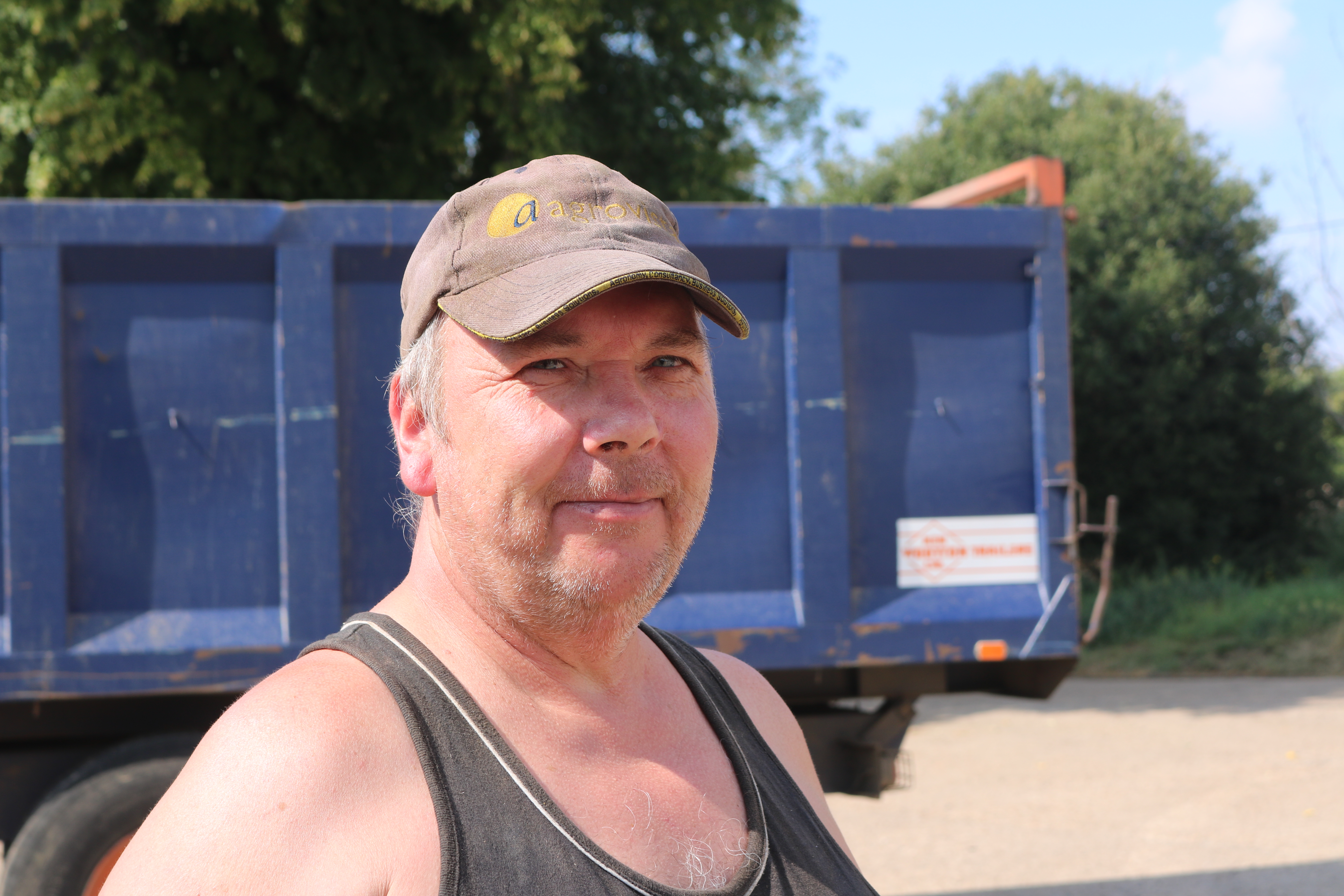
Dave Kench reckons it’s the little things, such as spray application and field hygiene, that count towards keeping ryegrass numbers down.
The system they’ve developed has come together with the help of Richard Prankerd, South East technical advisor for Bayer. Ben is a one of the company’s Forward Farmers Group (see panel on pxx), helping to evaluate different farming techniques and hosting trials to gain greater insight into tackling tricky grassweeds. This involves a fair amount of seed testing to gauge resistance status as well as trials on the farm, managed by NIAB.
“The ryegrass issue on the estate goes back over 20 years,” explains Keith, a former Sentry manager himself and now the farm’s agronomist. “We think it relates to the use of an Airtec sprayer back in the 1990s, and a consequent cut in dose rates applied at the time, which built up a level of herbicide resistance.
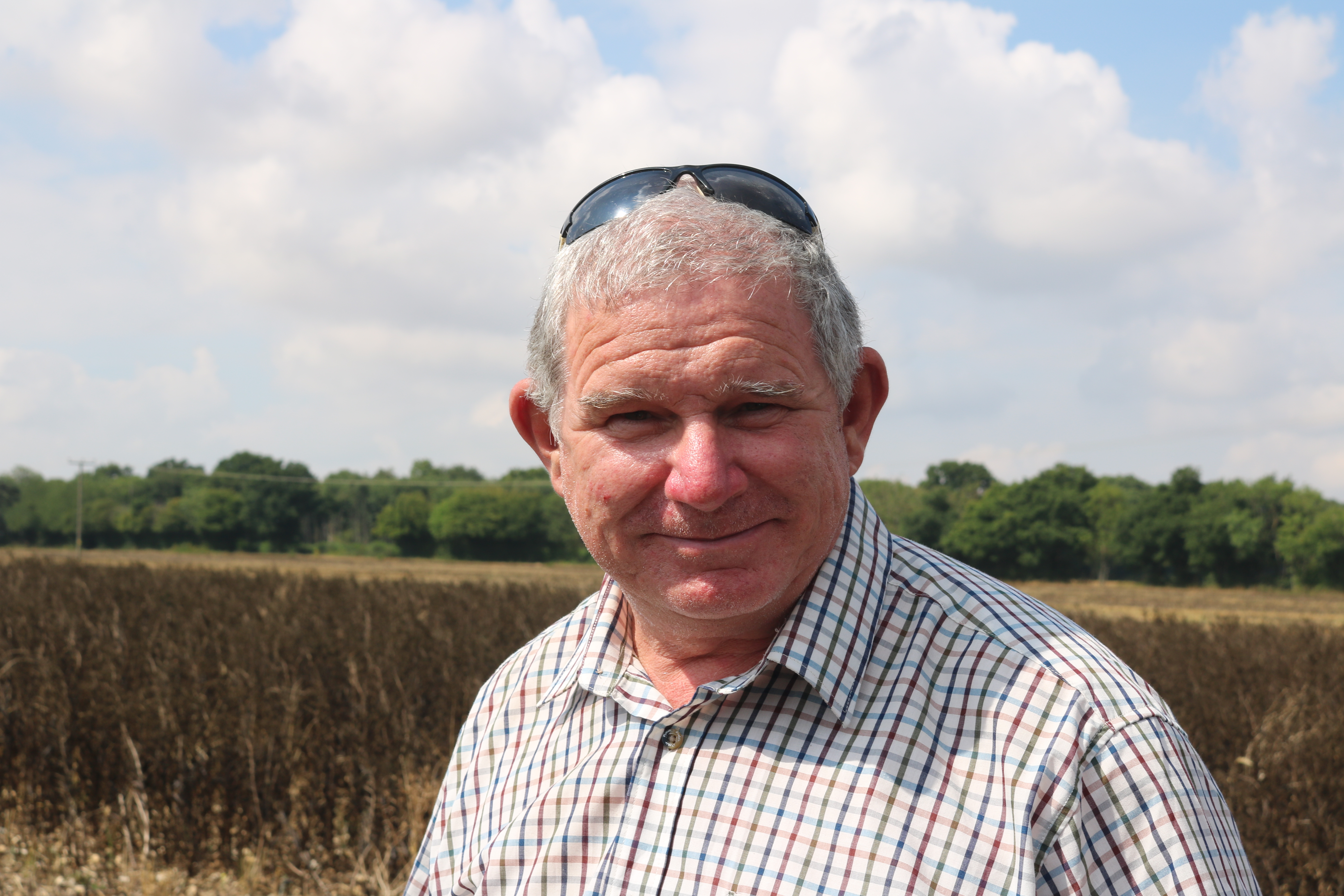
The trials programme, along with the resistance testing, have proved the real eye-opener for Keith Truett.
“Flufenacet then became the key active, and we relied heavily on it. The identification of resistance was a lightbulb moment for us, and prompted a complete change in strategy, informed by the testing and the trials that started three years ago. We now have a four-point plan,” he explains.
- Adopt a numbers approach. “If the ryegrass is waving at you at harvest time, something else has to happen to bring it under control. At Belmont we take the worst fields temporarily out of arable production and spray out bad patches to reduce the heaviest populations.”
- Sharpen up practice. “This is the attention to detail, which makes all the difference – ensuring moist seedbeds, that chemical application is the best you can achieve, and that good field hygiene measures are followed.”
- Use the best of science. “It’s essential to know the resistance status, more so than with blackgrass. This can be an expensive process, so we’re testing ten fields per year. Results from the trials also reveal the most effective spray programmes.”
- Mix modes of action. “One of the main things we’ve learned is the value of selecting the right actives, and it’s very easy to jump to conclusions that may not ring true about what’s effective on ryegrass.”
Reducing the population
Spring cropping reduces the ryegrass burden but is not as effective a strategy as it is in blackgrass, notes Keith. “Ryegrass germinates and grows all year round, and this has become a real issue for us. So we’ve adopted several cultural techniques for reducing populations alongside a change in the herbicide programmes.”
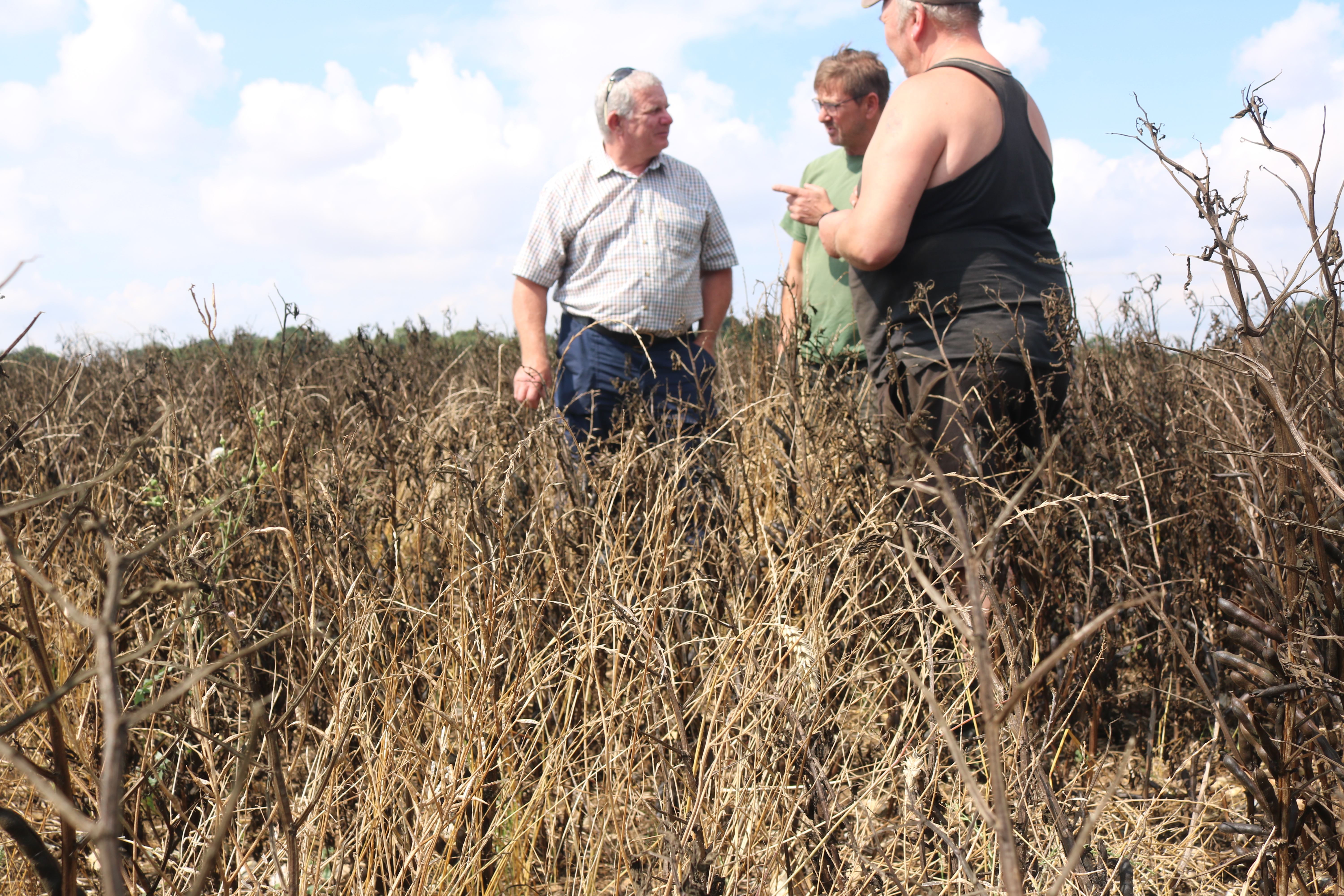
The revised herbicide strategy has been working for the past two years but has to go hand-in-hand with cultural control techniques.
The main step has been the introduction of a one-year silage crop into the arable rotation, explains Ben. “The aim is that this is a temporary measure while we still have BPS support. The field is drilled with wheat at a low seed rate, with no inputs applied apart from 50-60kgN/ha in February or early March. Then before the ryegrass goes to seed at the end of May or beginning of June, it’s cut for silage. It makes excellent quality forage and a neighbour is keen to take it from us. Then we manage the area as a stale seedbed until autumn.”
Hybrid barley can prove effective at smothering the blackgrass, and Keith and Ben agree that while late drilling can help, good crop competition takes priority. “We’re finding the recommended seed rate for hybrid barley is a bit low, and the crop doesn’t really get revved up until March. So this year, we’re going to drill earlier at the same seed rate,” notes Ben.
Late drilled Skyfall is proving to be a better bet than spring wheat for much the same reasons, with the added bonus of a greater choice of chemistry.
Depth of cultivations has reduced, aiming not to bring up ryegrass that has been buried, but the farm hasn’t gone no-till, points out Dave. “We still need some form of cultivation, although it would be nice to keep everything at less than 50mm. But our flinty soil can be a real challenge, and we incorporate all our straw.”
The farm has a choice of both disc and tine for working the soil and at drilling. A 6m Horsch Terrano or Väderstad TopDown are set to go no deeper than 100mm, with Dave preferring the finish achieved by the TopDown, although the flints are merciless on its tyres.
The main drill is a 6m Weaving Sabre Tine. “This works well especially when conditions turn wet, and its narrow points ensure minimum disturbance at drilling. If it’s dry or trashy, I prefer the Väderstad Rapid, which is brilliant for oilseed rape, but it does move too much soil,” he notes.
Dave reckons it’s the little things that count towards keeping ryegrass numbers down. “I always take time to blow down the combine between fields – it makes such a difference with the number of nooks and crannies on that Montana.”
A Landquip trailed sprayer is run at 10-11km/h with water volumes at 133-200 l/ha. “I try to stick to 200 l/ha for the pre-emergence herbicide, with the Horus (mesosulfuron+ iodosulfuron-methyl) going on at 160 l/ha. We use 04 Guardian Air nozzles, alternated forwards and backwards, which means the boom has to be raised to 70cm, rather than the ideal 50cm,” he explains.
Dave carries out much of the management around the trials, too, and is brought into the conversations on how the various spray programmes are performing. “The trials are a pain in the backside to look after, but they’re definitely worth it,” he notes.
Best technology
It’s the trials programme, along with the resistance testing, that have proved the real eye-opener for Keith. “The main aspect it’s shown up is chemistry we had assumed is no longer effective but is actually providing good control. This is particularly evident with the contact herbicides,” he says.
It was a wave trial that showed this up, although results have since been confirmed through resistance testing. Contact treatments were applied from October through to March with results closely monitored. The March application proved most effective.
The trials have also informed the best way forward with new chemistry, and Ben is clear on where the loss in flufenacet efficacy is currently made up. “Proclus (aclonifen) has made a massive difference. We can now use it in barley, and we’re stepping our barley area as a result.”
Keith talks through the current strategy. “The aim throughout is to hit the weed before it gets to two true leaves, bearing in mind ryegrass germinates throughout the season.”
So it starts with a pre-em of Liberator (flufenacet+ diflufenican) with Proclus. “This has to be a pre-em – leave it until peri-emergence and you’ve already lost the battle. We may also add in prosulfocarb.”
Keith believes that shoot uptake is where the chemistry has most effect when following up. “We tend to come in 4-5 weeks later with Tower (pendimethalin+ diflufenican+ chlorotoluron), with the CTU probably doing most of the work – I’m not sure we get much from the PDM. Going forward, this is probably the slot where we’ll apply cinmethylin.”
Depending on field conditions, weed emergence and actives applied to date, there’s often a third treatment before Christmas or in early January, using prosulfocarb or Tower.
“The final application will be the contact herbicide, aiming for March, following our wave trial result. Here we’ll apply Proverb that has the mesosulfuron and iodosulfuron from Atlantis with the added activity from thiencarbazone,” notes Keith.
With this alone costing £50/ha, the total herbicide bill can typically come to around £250/ha. “That’s a lot to spend on herbicides, but the point is it’s working, and the farm’s achieving wheat yields of 12t/ha where good control in achieved,” he reasons.
“But the aim is to bring the cost down to £150/ha with the same trajectory on control. The way to achieve that will be to keep the programme constantly under review, mixing and matching actives, and informing our choices through the testing and trials, bringing in new options and working out where they fit. It’s the strategy that’s been working for the past two years, and it has to go hand-in-hand with the cultural control techniques we have in place,” concludes Keith.
Mix and match to dispatch your IRG
Take a good look at the range of actives on offer and work out where they fit, advises Tom Chillcott, herbicide campaign manager for Bayer. “While blackgrass may have been the focus in the past, many growers are now struggling with ryegrass and bromes. Just because your blackgrass is resistant to certain actives, it doesn’t mean your ryegrass will be too.”
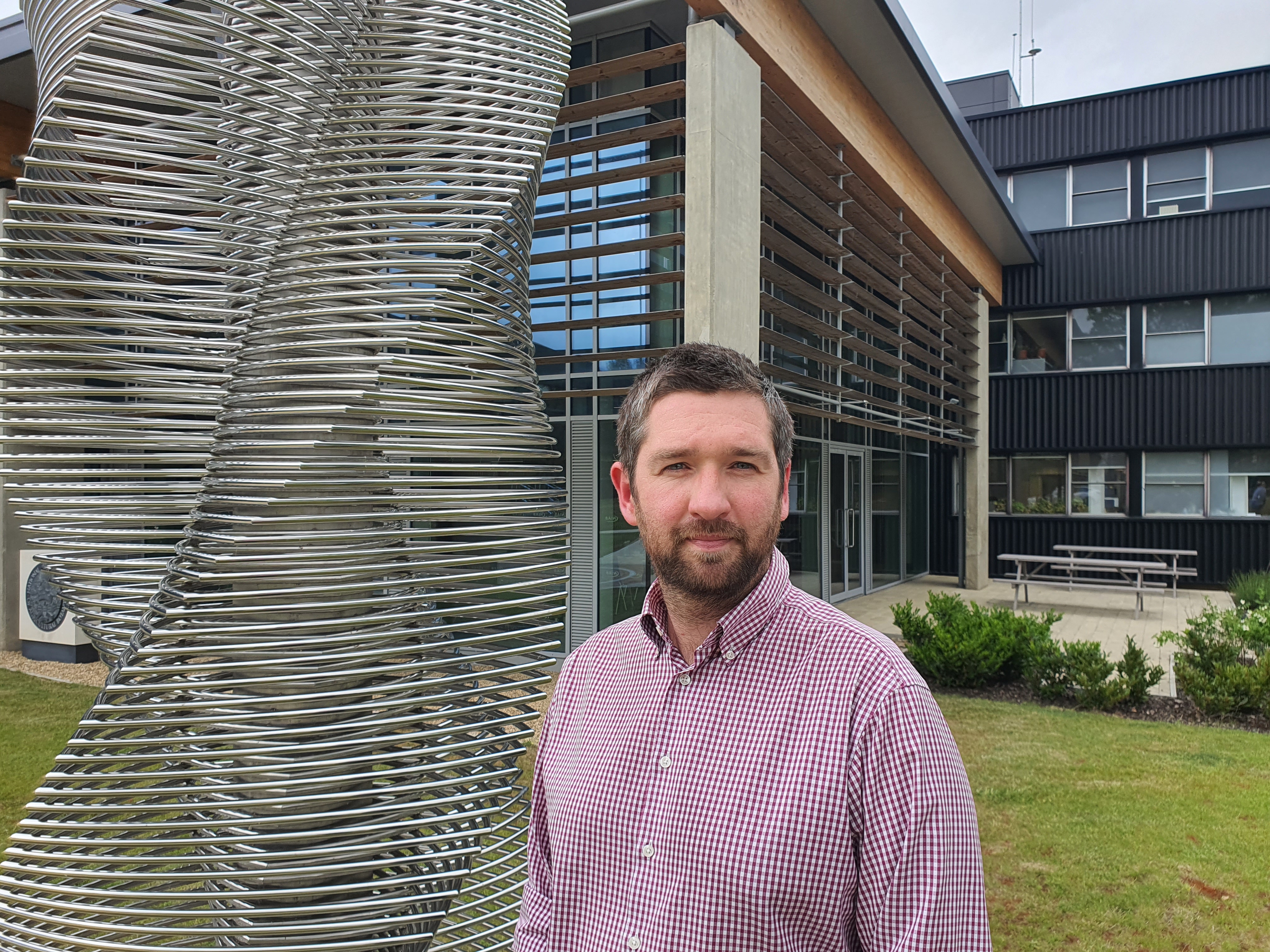
Just because your blackgrass is resistant to certain actives, it doesn’t mean your ryegrass will be too, says Tom Chillcott.
He points to some of the new options in the armoury, including Proverb, which adds some root activity against blackgrass, loose silky bent, wild oats, ryegrass, meadowgrass, sterile brome and a range of annual broadleaf weeds in winter wheat and winter triticale.
“We’re finding really good results from Proclus, especially on Italian ryegrass. It’s a new mode of action on grassweeds and is now approved for use in winter barley. Here, our trials have shown a 7% uplift in control of IRG when added to a standard Liberator programme,” he says.
There’s also Octavian Met, adding metribuzin into a standard Liberator. “This has two application rates – 1 l/ha until 30 September or 0.5 l/ha until 30 November. With a wide spectrum of grassweed and broadleaf weeds controlled, the higher rate is a good option in early drilled cereals including winter barley. The lower rate is a useful top up – it has shoot activity so provides some control of established weeds as well as preventing further germination.”
But it’s not just about the chemical actives, says Tom. “We’ve been putting more resource than ever into resistance testing, especially with ryegrass, publishing results from the biggest IRG survey ever carried out in the UK earlier this year (see CPM, July 2022 issue). This has shown the value of testing to know what you’re dealing with, and the treatments applied to the populations showed the benefit of mixing modes of action.
“Forward-thinking farmers, getting even, brings in our Blackgrass Taskforce farmers. We work closely with farmers facing particularly tricky grassweed problems, and are now broadening this out to bromes and ryegrass. Our focus continues to be on bridging the gap between the control we see in our trials and what’s achieved in practice. It’s been really interesting to learn from the experiences of the farmers involved and the differences in control you can bring with a co-ordinated on-farm strategy,” notes Tom.
“Going forward, there are very exciting new herbicides in the Bayer pipeline and it’ll be the Forward-thinking farmers who’ll get to see them first.”
Forward-thinking farmers
With robotics, gene mapping and molecular markers, digital technology and bio-chemistry it is a dynamic time for anyone involved in agriculture.
Challenges lie ahead, namely the need for UK agriculture to improve its productivity while minimising its environmental footprint. But farmers have always had to deal with change and adopt new ideas and technology.

Bayer is at the core of these helping UK farmers achieve this. Working with farmers throughout the UK and further afield we’re evaluating different farming techniques, trialling, and developing new diagnostic tools for greater insight and refined decision making coupled with innovative plant breeding and product development programmes.
Innovative solutions and services will emerge to assist farmers achieve profitable and sustainable agronomic practices. There is much to look forward to and this series of articles will look at how partnership between farmer and industry can achieve this together.
This article was taken from the latest issue of CPM. For more articles like this, subscribe here.

